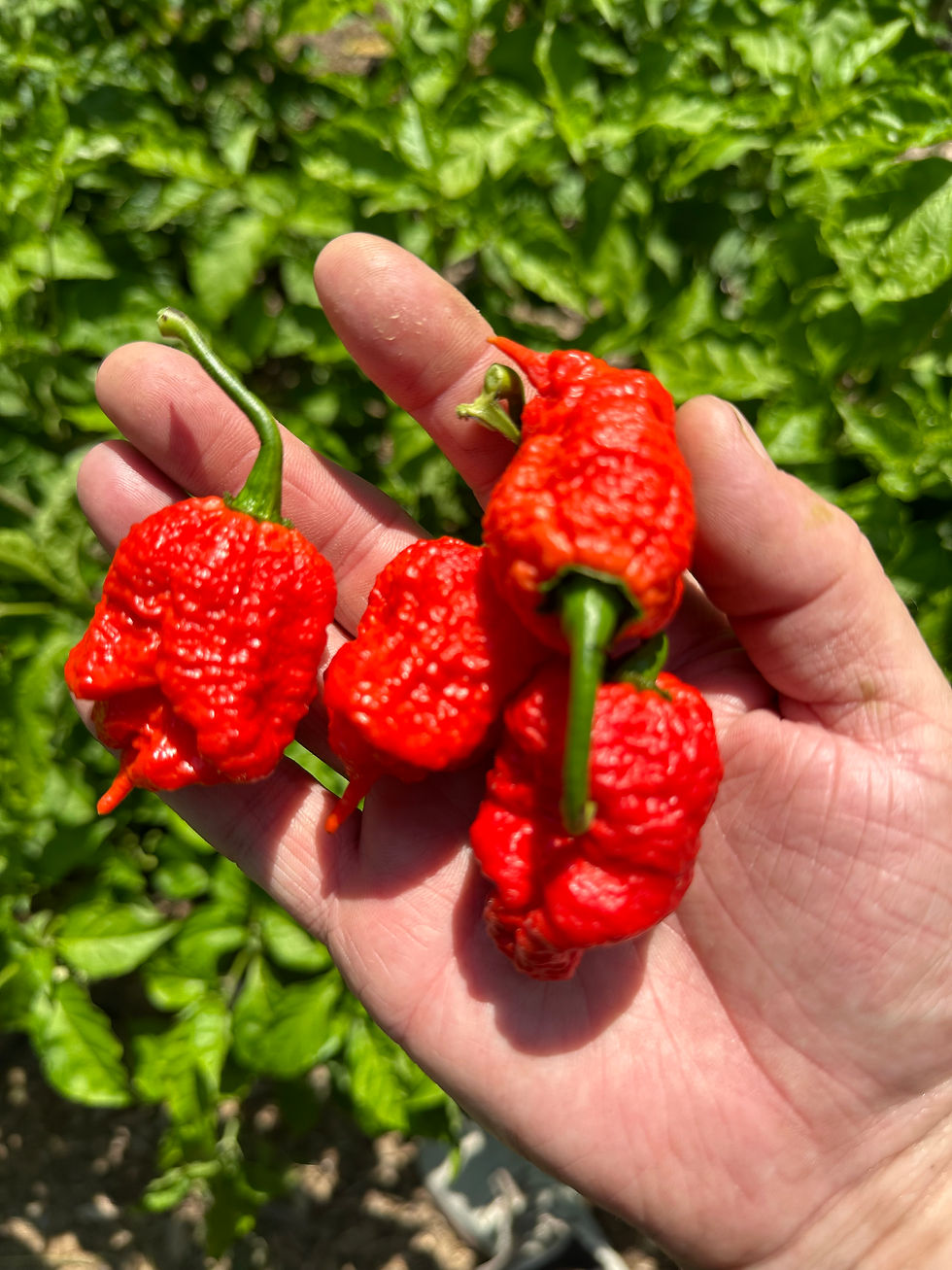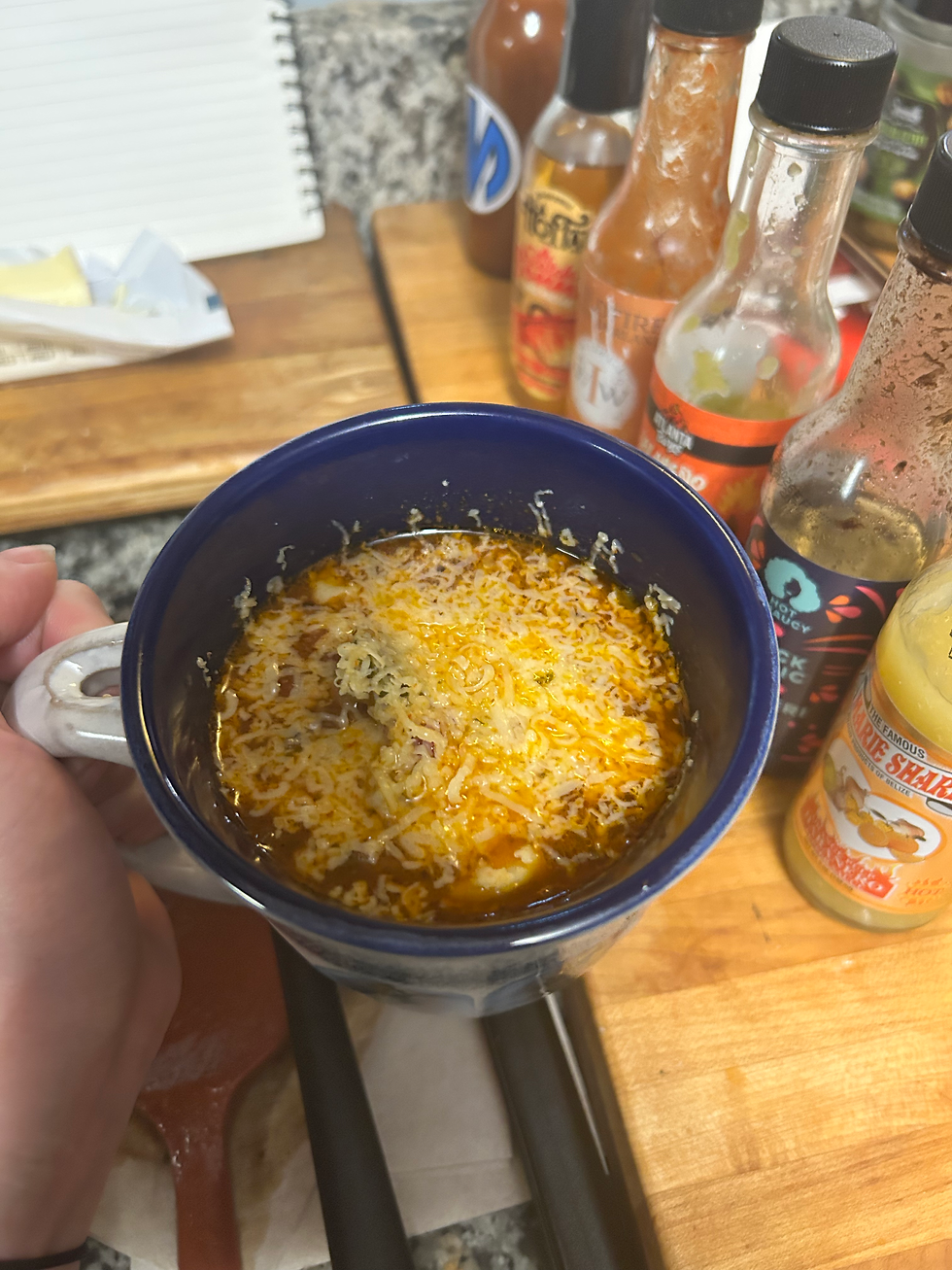Capsaicin Controversy - Sensitivity, Tolerance, & Biology
- Dragonzorde

- Oct 26
- 5 min read
By Dragonzorde, your friendly neighborhood flame enthusiast
Alright, spice soldiers! It’s time to settle a debate hotter than a Carolina Reaper in August.
"Some like it hot, and some sweat when the heat is on."
- The Power Station
Picture this: You’re at a dinner party. The enchiladas hit the table looking innocent enough… but three bites in, your face is redder than a ripe habanero, tears streaming, ice water in hand. Meanwhile, your friend’s over there laughing, barely breaking a sweat, saying, “What’s wrong with you?! These aren’t even spicy!” Then there’s that friend, you know, the one already asking, “Yo, got any hot sauce?”
So which one are you??
Here’s the kicker: it’s not just about bravery or taste buds. The real fire behind the flame lies in your biology.
The Molecular Mischief of Capsaicin
Capsaicin is that fiery molecule responsible for the burn in chili peppers. It’s the spicy compound that binds to the TRPV1 receptor (that’s “transient receptor potential vanilloid 1,” for my fellow nerds in the back).
Here’s where it gets wild: this same receptor can also be activated by vanillin, the compound that gives vanilla its cozy aroma [1]. Yeah, that warm, sweet scent that makes cookies smell like hugs is pinging the same nerve channels that make hot sauce feel like a flamethrower on your tongue. The difference? They send different signals to your brain: one cozy, one chaos.
These TRPV1 receptors live at the ends of sensory neurons. When capsaicin hits, they light up like a switchboard, sending a “FIRE ALERT” message to your brain, which interprets it as heat or pain.
Here's where it gets even spicier--- not all burns are built the same. As Hot Sauce Sensei (you may recognize him from his tasting table at our festival every year) explains in his Hot Sauce Cookbook blog, there are actually five primary types of capsaicin, each with its own fiery fingerprint. Beyond the sheer heat, these compounds differ in linger (how long that burn stays with you), intensity (whether it stabs or smolders), growth (how fast the flame builds), and location (where in your mouth the blaze ignites). For example, you may feel the lingering heat from a reaper in the back of your throat. It's like a full orchestra of burn, and every pepper plays its own solo.

Nature’s Fiery Defense Mechanism
And here’s where the plot thickens: this whole spicy ordeal? It’s an intentional act of war by the pepper plant.
See, peppers didn’t evolve to please your taste buds; they evolved to survive. Capsaicin exists to keep mammals (that’s us) from eating them. Birds, on the other hand, can’t even detect capsaicin; they lack that TRPV1 receptor [2]. (Might I mention that I, too, as a dragon, also lack that receptor.) So, while we’re wiping tears and chugging milk, our feathered friends are out here munching on peppers like candy and spreading those seeds far and wide.
Mother Nature: 1, Dragons: 1, Mammals: 0.
Why Some Humans Handle the Heat
Now, let’s talk genetics. You ever wonder why your buddy treats ghost peppers like snack food while you’re over here questioning your life choices? Turns out, part of it’s in your DNA.
Variants in the TRPV1 gene affect how sensitive your receptors are to capsaicin [3]. Some folks have more of these receptors or more reactive versions of them. This means their body screams “Fire!” louder than others.
So, next time your friend’s sweating bullets over “mild” salsa, don’t judge — they might just be genetically predisposed to the burn.
Training for the Spice Olympics
Spiceheads aren’t always born; they’re made! Eat enough spicy food, and your TRPV1 receptors start to chill out a bit (literally). Scientists call it desensitization [4]. We call it building your spice armor.
It’s like training for a marathon... except the finish line is bragging rights, a scorched tongue, and often a nice little buzz!
Spice Is Cultural, Too
Culture plays a massive role in capsaicin sensitivity and tolerance. Folks raised on spicy cuisines — think Thailand, India, Mexico, Nigeria — often have a naturally higher tolerance. Not only does repeated exposure build resistance, but it can even influence gene expression related to capsaicin sensitivity.
So if your Thai friend is casually demolishing ghost peppers like potato chips, their upbringing might’ve been the ultimate spice bootcamp.
Taste Bud Battles & Brain Games
Let’s not forget the physical side — taste buds. Some people are supertasters, meaning they’ve got way more taste buds per square inch of tongue. That means they feel spice more intensely [5]. Throw in age, hormones, and even your overall mood, and boom! Spice perception becomes a moving target.
And get this: your mindset can also affect how you feel the heat. Psychological studies show that expectation and social context can shape your perception [6]. If you hype yourself up before tackling that curry, you might just experience less burn; the spice is partly in your head.
Pain, Pleasure, and Perks
Now, before you swear off spice forever, remember this: capsaicin isn’t just here to torture you. Research suggests it may help with pain relief, metabolism boosting, and even cancer prevention [7]. It’s nature’s paradox: pain with purpose.
Just don’t overdo it. Too much can still send your stomach into a meltdown. Moderation, my spicy disciples, is the secret to survival.
Final Thoughts from Dragonzorde
The capsaicin controversy will forever divide dinner tables, and that’s the beauty of it! Our reactions to spice are a cocktail of genes, culture, environment, and mindset.
So next time you’re at a dinner party and someone’s fanning their mouth like a cartoon character, remember: it’s not just about the food– it’s about the science of sensation.
Whether you’re reaching for the hot sauce or the milk, you’re tasting evolution itself.
And as your friendly neighborhood flame enthusiast, Dragonzorde, I say:
“Feel the burn, honor the biology, and keep that fire alive.”
If you haven't bought your pre sale tickets to Hot Sauce Fest ATL this November 15th, lock them in now!!

[1] Xu, H., et al. (2006). Nature Neuroscience, 9(5), 628–635.
[2] Tewksbury, J. J., & Nabhan, G. P. (2001). Nature, 412(6845), 403–404.
[3] Joo, Y. P., et al. (2019). PloS One, 14(4), e0215761.
[4] Ludy, M. J., & Mattes, R. D. (2012). Appetite, 58(1), 19–27.
[5] Bartoshuk, L. M., et al. (1994). Physiology & Behavior, 56(6), 1165–1171.
[6] Rozin, P., & Schiller, D. (1980). Motivation and Emotion, 4(1), 77–101.
[7] Sharma, S. K., et al. (2013). Journal of Complementary and Integrative Medicine, 10(1), 1–10.






Comments